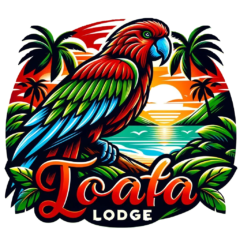History of ‘Eua.
‘Eua is the second largest island in the Kingdom of Tonga, situated about 40 kilometers east of Tongatapu. The island boasts a rich history, tracing its origins back to its initial settlement by the Lapita people around the 9th century BC.

| James Cook & La Pérouse arrival on ‘Eua. The renowned British explorer James Cook arrived on ‘Eua in 1773, spending a fortnight on the island. Captivated by its beauty and the warmth of its residents, he penned: “The people of ‘Eua are among the most courteous and obliging we have encountered. Their attire is decent, and the island’s rich soil offers an abundance of provisions.” By 1777, the French explorer La Pérouse graced ‘Eua’s shores, staying for a quarter of a year. In admiration, he noted: “The inhabitants of ‘Eua display a level of civilization and intelligence unparalleled in the Pacific. Their expertise in farming and handicrafts is noteworthy.” The dawn of the late 18th century witnessed ‘Eua emerging as a stronghold for the Wesleyan Methodist Church. The initial wave of Wesleyan missionaries reached the island in 1797, and by the turn of the 19th century, Christianity had become the dominant faith. | Historical Highlights of ‘Eua: 1616: Jacob Le Maire becomes the first European to spot ‘Eua. 1643: Abel Tasman’s expedition leads him to ‘Eua, dubbing it “Rotterdam Island.” 1773: James Cook’s visit spans two weeks. 1777: La Pérouse’s stay stretches over three months. 1797: The Wesleyan missionaries make their debut. 19th century: A surge in European influence, with ‘Eua at the epicenter. 1967: ‘Eua welcomes its maiden airstrip. 1970s: The island’s first roadway is constructed. |
| European Influence and Defense Tactics: By the late 18th century, interactions with European traders significantly impacted the strategic defense capabilities of the Tongans. According to Niel Gunson’s “The History of Tonga,” the Tongans procured cannons from these traders. Rather than being mere symbols of power or prestige, these cannons were actively deployed to fortify the island against threats. Pirates, a ubiquitous menace in the Pacific during that era, along with other potential invaders, found a well-defended ‘Eua, thanks to these cannons. This period marks a notable intersection of traditional Tongan resilience and newfound European technology. As the 19th century progressed, ‘Eua turned into a hotspot for European traders and missionaries, with its fertile terrains promising lucrative agricultural prospects. Despite its growing influence, ‘Eua retained its serene charm well into the 20th century. Not until 1967 did the island see its first airstrip, and its inaugural road came into existence only in the 1970s. Now, ‘Eua stands as a sought-after tourist attraction, celebrated for its pristine beaches, rainforests, and affable inhabitants. | Toafa Lodge Nestled in Pangai, ‘Eua’s, Toafa Lodge is a testament to genuine Tongan hospitality. This family-run sanctuary offers an array of lodgings, from scenic garden rooms and spacious family quarters. At Toafa Lodge, the essence of Tonga comes alive. Committed to offering an unparalleled Tongan journey, our amiable and adept staff ensures your stay is nothing short of memorable. Conclusion: From its historic roots to its modern-day allure, ‘Eua presents a unique blend of past and present. Toafa Lodge stands as the epitome of this harmony, offering visitors a chance to immerse themselves in the island’s beauty and legacy. |
